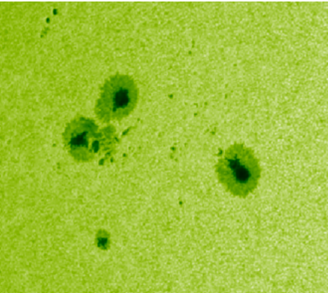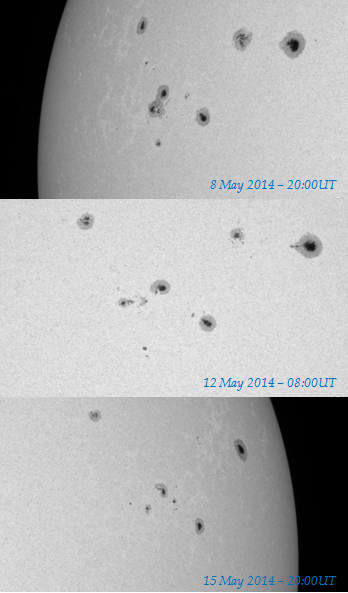From 5 till 18 May, sunspot Group NOAA 2056 made its transit over the solar disk. This group was not especially big, but initially had a complex trailing sunspot section that resulted in an M5 flare on 8 May (see previous Newsletter). Over the next few days, the group gradually simplified and almost completely disintegrated.


During the last 2 weeks, this active region certainly left its footprint on the solar activity. Aside its M5 flare, it also produced 5 moderate C-class flares (larger than C5). As can be seen from the x-ray flaring activity underneath, this graph would have had quite a different outlook without NOAA 2056's flares.

One of the more pertinent C-class flares took place on 14 May, when NOAA 2056 produced a C8 flare. It was a lengthy event, starting at 12:59UT, reaching its maximum only at 15:04UT, and ending at 15:28UT. Most of the flaring activity took place along the magnetic inversion line to the north of the region near the remainder of the trailing portion, which at that time had the same magnetic polarity as the main leading spot. In the course of the event, the most intense areas of the flare shifted from east to west. Part of a small filament located to the south of the region was ejected, but no coronal mass ejection was observed.

This movie first shows the evolution of the region from 8 till 15 August (white light, green filter), and an outlook in white light of the region on 14 May. Then follows the evolution of the C8 flare, first in SDO/AIA 304 (transition region), AIA 171 (upper transition region and lower corona), then a combination of the two, and ending with the AIA 304 movie overlaid on the magnetogram.
Credits - Data and imagery were taken from SDO and GOES. Tools used were STAFF and (J)Helioviewer.
 |
 |





